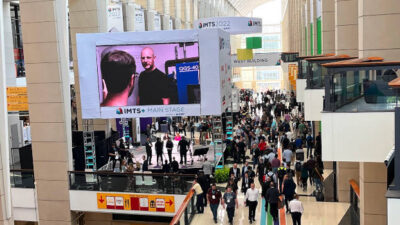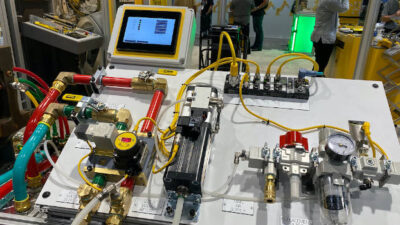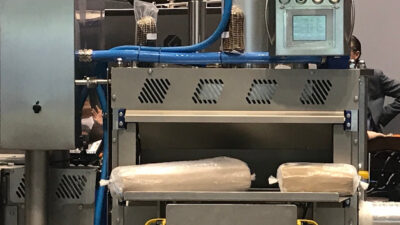Hardworking industrial human-machine interfaces (HMIs) are usually found on plant floors, not at the PC-based controls of a luxury yacht moored in sun-splashed Palm Beach, Florida. However, the 153-ft, aluminum-hulled Detroit Eagle is not an ordinary ship. Owned by legendary racing-owner and industrialist Roger Penske, Detroit Eagle was launched in 2001, and mixes recreation with industrial con...
Hardworking industrial human-machine interfaces (HMIs) are usually found on plant floors, not at the PC-based controls of a luxury yacht moored in sun-splashed Palm Beach, Florida. However, the 153-ft, aluminum-hulled Detroit Eagle is not an ordinary ship. Owned by legendary racing-owner and industrialist Roger Penske, Detroit Eagle was launched in 2001, and mixes recreation with industrial control capabilities. For example, the vessel’s below-deck propulsion management system is monitored and controlled using Simatic WinCC from Siemens Energy & Automation (Alpharetta, GA).
PLCs and propulsion
David Parry, a Penske staffer, who helped design the ship’s control system, opted for a PLC-based solution because it could provide precise monitoring and control of running conditions. Mr. Parry felt that off-the-shelf technology would be the best solution. “PLCs have progressed to the point that you can be innovative without having to resort to a custom control interface,” says Mr. Parry. “PLCs also are easier to service, and regardless of the project’s magnitude, price still matters.”
Working with the marine division of ControlCorporation of America (CCA, Richmond, VA), the builders integrated a Digital Combined Diesel and Gas (CODAG) propulsion management system into the vessel’s two 3,650-hp MTU, 16-cylinder 4000 series diesel engines and one 5,600-hp Honeywell gas turbine. Both diesels and the gas turbine have electronic controls that are read directly by serial input modules in a Siemens S7-414 PLC. The gas turbine interface is RS-422 and the diesels are RS-485.
Digital HMI dashboard
The engineer’s main console includes two touchscreen/monitoring panels, where the Microsoft Windows NT platform WinCC HMI is accessed via an industrially hardened PC. Radio Zeeland of Holland designed the graphics on eight pages, mimicking analog gauges as well as storage tank graphics, bar charts and alarms.
“The Windows NT-based system allows us to eliminate dozens of analog gauges and is more precise than analog. The entire running system is shown on the panel through the HMI, and it can be operated from here,” says Detroit Eagle’s engineer, David Wilder.
Siemens’ Simatic HMI/PLC combination simplifies redundancy, as well as networking identical control panels in the main wheelhouse and fly bridge via Ethernet over fiber-optic cable. All tags on the HMI are populated directly from the Simatic Step 7 PLC configuration tool. Mr. Parry worked with CCA to program the system using the CFC programming languages, a part of the Step 7 toolkit that uses graphical data flow to simplify programming.
While using an industrial HMI to control an engine management system is still a new approach, Mr. Parry believes that the Detroit Eagle’s PLC/HMI combination is a practical solution that other ship builders can use. “It’s definitely something to be considered, because of the modularity saves a lot of time and money over a proprietary, hardwired system.”
For more information, visit www.sea.siemens.com .
Jim Montague, news editor [email protected]



